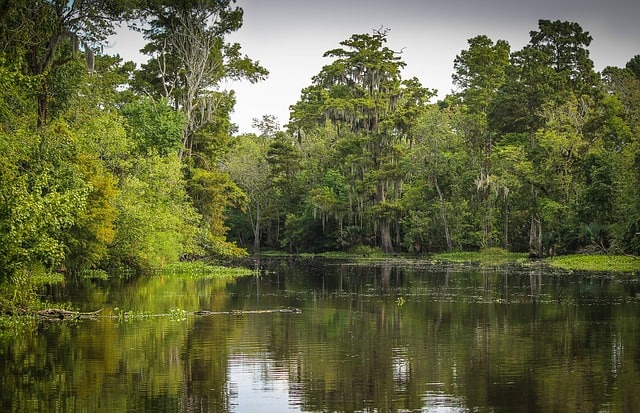The African Wetlands are identified as a hot spot in a new study for one-third of the global methane surge, as Newsweek reported. Methane emissions, which are about 28 times more potent greenhouse gas than carbon dioxide, have been rising steadily since 2007.
A massive influx of water from East African lakes, including Lake Victoria, flowing into the wetlands of South Sudan, has been captured in Satellite data. That water caused plant growth and microbial activity, producing a massive amount of methane, as the BBC reported.
“Methane is the second most important greenhouse gas, behind carbon dioxide,” Mark Lunt, an atmospheric scientist at the University of Edinburgh in Scotland, told Newsweek. “We need to be able to understand how and why it is changing in our atmosphere to inform how we might mitigate future emissions.”
The new study got published in the journal Atmospheric Chemistry and Physics. Lunt, the lead author, and his team used six years of satellite imagery to locate methane that was coming from Africa. Because of a dearth of atmospheric data, it has been overlooked mainly according to Newsweek.
“There are very few studies that have focused in detail on Africa, primarily because there isn’t much atmospheric methane data from there,” said Lunt in a university press release. “Using satellite data gives a unique perspective on the continent that wouldn’t otherwise be available.”
The data from GOSAT, the Japanese Greenhouse Gases Observing Satellite, were used by the research team to look at annual and seasonal methane emissions in sub-Saharan Africa.
The South Sudanese wetland, the area identified by the study, is recognized by UNESCO as one of the largest freshwater ecosystems in the world, and it covers an estimated 22,000 square miles.
Satellite images “show the Sudd wetlands expanded in size, and you can even see it in aerial imagery – they became greener,” said Paul Palmer, an atmospheric scientist at the University of Edinburgh who co-authored the research, to the BBC. “There’s not much ground-monitoring in this region that can prove or disprove our results, but the data we have fits together beautifully.”
The new research helps the scientists to locate the sources of methane emissions. Besides fossil fuels and agricultural practices that have made enormous contributions to the release of methane, there is certainly a natural source as well, as the BBC reported.
Methane had stabilized in the atmosphere during the early 2000s, but atmospheric concentrations increased in 2007 and again in 2014 after that.
“Global levels of methane in the atmosphere have been on the rise since the mid-2000s, after a period of relative stability,” said Lunt, as Newsweek reported. “There are many different explanations for why this is the case but the primary suspects have been an increase in microbial sources such as wetlands and agriculture from the tropics, as well as increases in fossil fuel emissions from countries such as the U.S. and China. Alternatively the sink – the process of removal of methane in the atmosphere – could have decreased resulting in the resumption of growth we see.”
As per the study published in the Proceedings of the National Academy of Sciences, the methane emissions from natural sources increase due to the climate crisis. In warmer temperatures, wetland microbes break down at a faster rate to release more methane.
“Wetland methane is produced through a process known as methanogenesis. Essentially wetlands are anaerobic environments that are ideal for the production of methane,” Lunt explained Newsweek. “Microorganisms break down organic matter in a process that results in the production of methane.”
According to Lunt, a study like this is essential to identify future interventions and making predictions for Earth’s climate better.
“In order to understand how methane might change in the future, it is essential that we can adequately explain changes in the present and recent past,” said Lunt in a University of Edinburgh statement. “Studies such as this can help narrow down the list of possible explanations, and hopefully improve our predictive capabilities for the future.”






